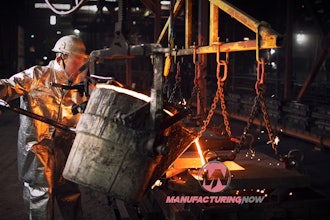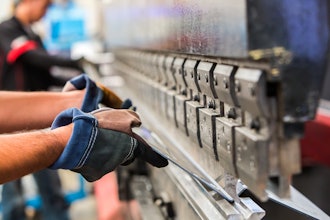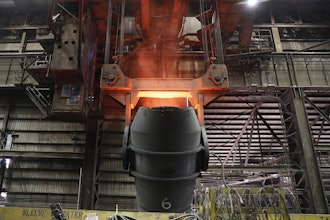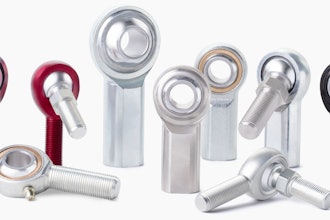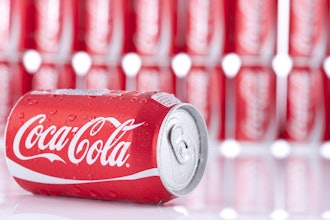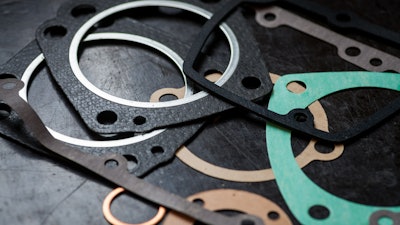
Industrial gaskets play a critical role in ensuring the proper functioning of machinery and equipment.
Distributors have a distinct position as honest brokers in the process of helping clients understand the many designs and types of gaskets, selecting the right one for each application, and the difference between low-grade gaskets compared to products from long-established manufacturers that invest in R&D. The unique expertise brought by knowledgeable distributors provides an invaluable link between plant operations teams and gasket manufacturers.
Gasket Applications
Food processing equipment poses unique challenges for maintenance personnel. Wet operating conditions and wash-down requirements can require specially-designed equipment to help ensure mandated sanitation compliance. Harsh chemicals like sodium hydroxide and other caustics are used to clean equipment and can be extremely corrosive. Additionally, high pressure spray is used, sometimes up to 1000 psi with the nozzle held just a few inches away from equipment. While this ensures all contaminants are removed from the equipment, water enters crevices and can compromise the seals. Because gaskets are out-of-sight and out-of-mind until production is down, it’s critical to select a high-quality gasket suited to this challenging environment.
Unfortunately, no industry is immune to unplanned downtime. For example, the failure of a centrifugal pump and gasket from cavitation during batch production at a chemical or life sciences plant poses many challenges to ensuring the integrity of controlled environments and preventing contamination.
Sealing solutions also play a critical role in the oil & gas industry to prevent leaks and contamination as well as ensuring operational efficiencies. Specifically, the primary role of gaskets is to seal the junctions between two surfaces, preventing the escape of oil, gas, and other fluids. This sealing capability is crucial as it directly impacts the efficiency and safety of the entire operation. A failure in a gasket can lead to leaks that not only cause operational downtime but can also pose significant environmental and safety risks, including fires and explosions.
Operating Conditions
The material of a gasket greatly influences how it performs in the intended application. Understanding the environments where gaskets will be used is critical to helping clients have the right solutions for each application. Extreme heat or cold can affect the gasket’s performance. For high-temperature applications – above 400°F – end-users should consider materials like graphite or polytetrafluoroethylene (PTFE); whereas lower temperature applications may require elastomers like ethylene propylene diene monomer (EPDM) or silicone.
The pressure exerted on the gasket is also an important consideration because this determines its required strength and material. High-pressure applications might demand metallic gaskets, while lower-pressure systems could use elastomeric or non-metallic options. For example, a gasket for a high-pressure steam valve operating at 500°F ideally should be a metallic gasket made of stainless steel or a graphite-based gasket.
The type of fluid being sealed is also a critical factor in selecting a gasket. Applications with corrosive fluids necessitate gaskets made from resistant materials like stainless steel or PTFE, which offer superior sealing performance. For applications involving solvents, hydrocarbons, or oils, elastomers like Viton or Buna-N are suitable choices to ensure a leak-free operation and product integrity.
Material Compatibility
Gaskets are made from various materials, including rubber, silicone, metal, and compressed fiber. Each material has unique properties that make it suitable for specific applications. It’s important to note that the gasket must be compatible with its sealing media to prevent chemical reactions and ensure long-term performance. The gasket material should also resist fluid absorption, swelling, or degradation over time; as such, rubber gaskets might not be suitable for strong acids or solvents.
Different materials have various coefficients of thermal expansion, requiring engineers to consider what can happen when a rubber gasket and the surrounding surfaces interact. Materials with similar thermal expansion coefficients should be paired to avoid stress and potential leaks.
Selecting the Right Type of Gasket
The choice and structure of gaskets depend on the applications and the environments in which the device operates. Not all equipment has the space to fit an O-ring, or some devices need more than just a flat gasket to provide adequate sealing. Thoroughly understanding end-users’ situations will help in providing a recommended solution. A simple, cost-effective flat gasket would be ideal for low-pressure applications and include rubber, fiber and metal-clad gaskets.
For a high-pressure pipeline carrying corrosive fluids, a spiral wound gasket with a metallic filler would be a robust and reliable choice. This gasket would also be ideal with valves and heat exchangers because it offers high pressure sealing capabilities and excellent adaptability to uneven flanged surfaces.
If an end-user has critical applications requiring high reliability, then ring joint gaskets are ideal because they provide superior sealing under high repressure and temperature. These gaskets are used extensively to prevent fluid and gas leaks in industries from oil and gas to chemical processing.
O-rings are versatile seals and widely used because of their efficiency, affordability, and ease of use in both static and dynamic applications like fittings and valves.
Size and Shape Considerations
Choosing the right gasket for any application requires a thorough examination of various factors. To help streamline this process and assist customers in making informed decisions, manufacturers use the acronym S.T.A.M.P., which stands for Size, Temperature, Application, Media, and Pressure. This acronym encapsulates the key considerations for selecting an appropriate gasket. When considering size and shape, the gasket’s dimensions must match the flanges being sealed. Specifically, the inner and outer diameter should align with the flange dimensions.
Because the gasket’s thickness can impact the sealing pressure and required compression, this variable must also be taken into account.
Gaskets also come in various shapes, such as round, oval, rectangular, and custom configurations, depending on the application.
Additional Questions to Ask
When meeting with end-users, in addition to the previous considerations, it’s important to determine the desired level of sealing because some gaskets excel in preventing leaks under high pressure, while others focus on preventing fluid permeation. In a critical application where a leak could be hazardous, a gasket with excellent sealing performance and minimal compression set would be vital for ensuring long-term safety and reliability. Additionally, discussing the application will help ascertain if this is a single-use application or if the gaskets are intended for multiple use.
Distributors must also ask questions that will determine costs and budgets, and which gasket solutions will be best.
Learning the myriad considerations about gaskets and listening to end-users’ application challenges positions distributors as honest brokers and trusted partners who are able to recommend the best gasket solutions.
Todd Farnsworth is the chief revenue officer of American Packing and Gasket.











